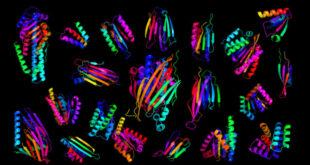According to investigators from the Prospective Urban and Rural Epidemiology (PURE) study, dairy intake of around three standard servings per day is associated with lower risk of cardiovascular disease and mortality, compared to lower levels of consumption.
Dairy consumption was associated with lower risk of mortality and major cardiovascular disease events in a diverse multinational cohort. Image credit: Rita E.
“Dietary guidelines recommend minimizing consumption of whole-fat dairy products, as they are a source of saturated fats and presumed to adversely affect blood lipids and increase cardiovascular disease and mortality,” said lead author Dr. Mahshid Dehghan of McMaster University and her colleagues.
“Evidence for this contention is sparse and few data for the effects of dairy consumption on health are available from low-income and middle-income countries.”
“Therefore, we aimed to assess the associations between total dairy and specific types of dairy products with mortality and major cardiovascular disease.”
The PURE study included data from 136,384 participants (35-70 years old) in 21 countries. They were grouped into four categories: no dairy (28,674 individuals), less than one serving per day (55,651), one-two servings per day (24,423), and over two servings per day (27,636).
One standard serving of dairy was equivalent to a glass of milk at 244 g, a cup of yoghurt at 244 g, one slice of cheese at 15 g, or a teaspoon of butter at 5 g.
Dairy consumption was highest in North America and Europe (368 g/day or above four servings of total dairy per day) and lowest in south Asia, China, Africa and southeast Asia (147, 102, 91 and 37 g/day respectively).
Compared to the no intake group, the high intake group (mean intake of 3.2 servings per day) had lower rates of total mortality (3.4% vs 5.6%), non-cardiovascular mortality (2.5% vs 4%), cardiovascular mortality (0.9% vs 1.6%), major cardiovascular disease (3.5% vs 4.9%), and stroke (1.2% vs 2.9%). There was no difference in the rates of myocardial infarction between the two groups (1.9% vs 1.6%).
Among those who consumed only whole-fat dairy, higher intake (mean intake of 2.9 servings of whole fat dairy per day) was associated with lower rates of total mortality (3.3% vs 4.4%) and major cardiovascular disease (3.7% vs 5.0%), compared to those who consumed less than 0.5 servings whole-fat dairy per day.
Higher intake of milk and yoghurt (above 1 serving per day) was associated with lower rates of the composite outcome, which combines total mortality and cardiovascular disease (milk: 6.2% vs 8.7%; yoghurt: 6.5% vs 8.4%), compared to no consumption.
The differences in the composite outcome for butter and cheese were not significant as intake was lower than for milk and yoghurt.
“Our findings support that consumption of dairy products might be beneficial for mortality and cardiovascular disease, especially in low-income and middle-income countries where dairy consumption is much lower than in North America or Europe,” Dr. Dehghan said.
The results were published September 11, 2018 in The Lancet.
_____
Mahshid Dehghan et al. Association of dairy intake with cardiovascular disease and mortality in 21 countries from five continents (PURE): a prospective cohort study. The Lancet, published online September 11, 2018; doi: 10.1016/S0140-6736(18)31812-9
 #Bizwhiznetwork.com Innovation ΛI |Technology News
#Bizwhiznetwork.com Innovation ΛI |Technology News




